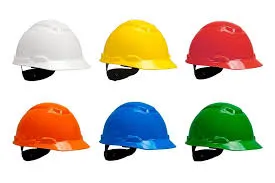It's uncomfortable and hot. It messes up my hair. It isn't cool. I'm only going a short distance. I'm not going to fall, so I don't need one.
These are just a few of the reasons people give for not wearing a helmet while roller skating, inline skating, riding a bicycle, scooter or motorcycle, or engaging in other potentially risky outdoor activities.
But according to Nicole Boniquit Levy, MD, a primary care sports medicine specialist at RUSH, there are no valid excuses for not strapping on this vital piece of protective gear.
Trauma to the brain can occur as a result of an impact, which can cause a concussion or open skull fracture, or a jarring motion, such as a quick turn or sudden stop. Even seemingly mild head injuries, where you don't lose consciousness, can cause permanent behavioral and cognitive problems, such as memory loss, inability to concentrate, sleep disorders and, in some cases, permanent disability or death.
Studies have shown that wearing a helmet reduces your risk of a serious brain injury and death because during a fall or collision, most of the impact energy is absorbed by the helmet, rather than your head and brain.
But just as important as wearing a helmet is wearing the right helmet. A helmet that doesn't fit properly or offer sufficient cushioning can give you a false sense of security while not actually providing the level of protection you need, Levy says. She offers the following five tips to help you effectively safeguard your gray matter:
1. All helmets are not created equal.
There are, in fact, different helmets for different activities, and each type of helmet is designed to protect your head from the impact common to a particular activity or sport. You should always wear a helmet that is appropriate for the activity you’re involved in because other types of helmets may not protect you adequately.
"Some helmets can be worn for multiple activities, but don't assume," says Levy. "Check the manufacturer's instructions for guidelines before buying a helmet."
2. If the helmet doesn't fit, don't buy it.
To ensure optimal protection, your helmet should meet the following criteria:
- Feel comfortable but snug.
- Sit evenly on your head (not be tilted back on the top of the head or pulled too low over your forehead).
- Not move in any direction, back to front or side to side.
- Have a secure buckle to keep it from moving or falling off on either a first or second impact. So if you are riding your bike and collide with something (first impact), the helmet will still be firmly in place if you then fall onto the pavement (second impact).
- Be easy to adjust and fit properly without a lot of adjustments. And once adjustments have been made, they should stay put.
-
High temperature Hard Hats Fiber resinforce resin safety helmet

3. Kids have special helmet needs.
It can be especially challenging getting kids to always wear a helmet, Levy says, so it's up to parents to set hard and fast rules.
"Be consistent and firm," she says. "Don't negotiate. Don't compromise. Don't give them a choice: Either they wear the helmet or they don't ride their bike, scooter, etc. That way, they know you take it seriously they make it a habit."
Parents should also lead by example and always wear their helmets.
As for the helmets themselves, while it's OK to purchase your child's clothes in a size larger than he or she wears, the same is not true of helmets; helmets should fit perfectly when you purchase them.
Test your children's sizing by having them try on a variety of helmets. When fastened and tightened, the helmet should not move from side to side or front to back, and your child's forehead should be properly covered to keep it protected.
Helmets for children or toddlers should also have a buckle that holds firm in a crash but releases after five seconds of steady pull to avoid potential strangulation. A child's helmet will usually fit for several years, and most models have removable fitting pads that can be replaced with thinner ones as the child's head grows.
Those guidelines apply to children who are at least 1 year old. According to the American Academy of Pediatrics, children under 1 year of age should not be on bicycles at all.
"It's simply not safe to take a baby on a bicycle," Levy affirms. "Babies haven't developed sufficient bone mass and muscle tone to enable them to sit unsupported with their backs straight. And, just as important, their necks aren't strong enough to support the weight of even the lightest helmets. So even though baby-sized helmets are available, they are not advisable."
4. Helmets aren't forever.
Some helmets are manufactured to withstand one impact, while others are made to withstand multiple impacts.
Bicycle helmets are designed to protect against a single severe impact, such as a fall onto the pavement. The foam material in the helmet will crush to absorb the impact energy during a fall and can't protect you again from a subsequent impact. So even if there are no visible signs of damage, you must replace it.
Other helmets are designed to protect against multiple moderate impacts, including football and hockey helmets. However, you may still have to replace these helmets after one severe impact, particularly if the helmet has visible signs of damage, such as a cracked shell or a permanent dent.
5. A helmet is just part of the safety equation.
Just remember that while helmets are protective, they aren't perfect: You can sustain a head injury even if you always wear one, Levy cautions.
That's why it's important to further reduce your risk by exercising caution during recreational activities. "Watch your speed, and obey posted traffic signs and signals," she says. "Also, be mindful of cars, pedestrians, animals, uneven pavement and other impediments that may cause a collision or fall."
